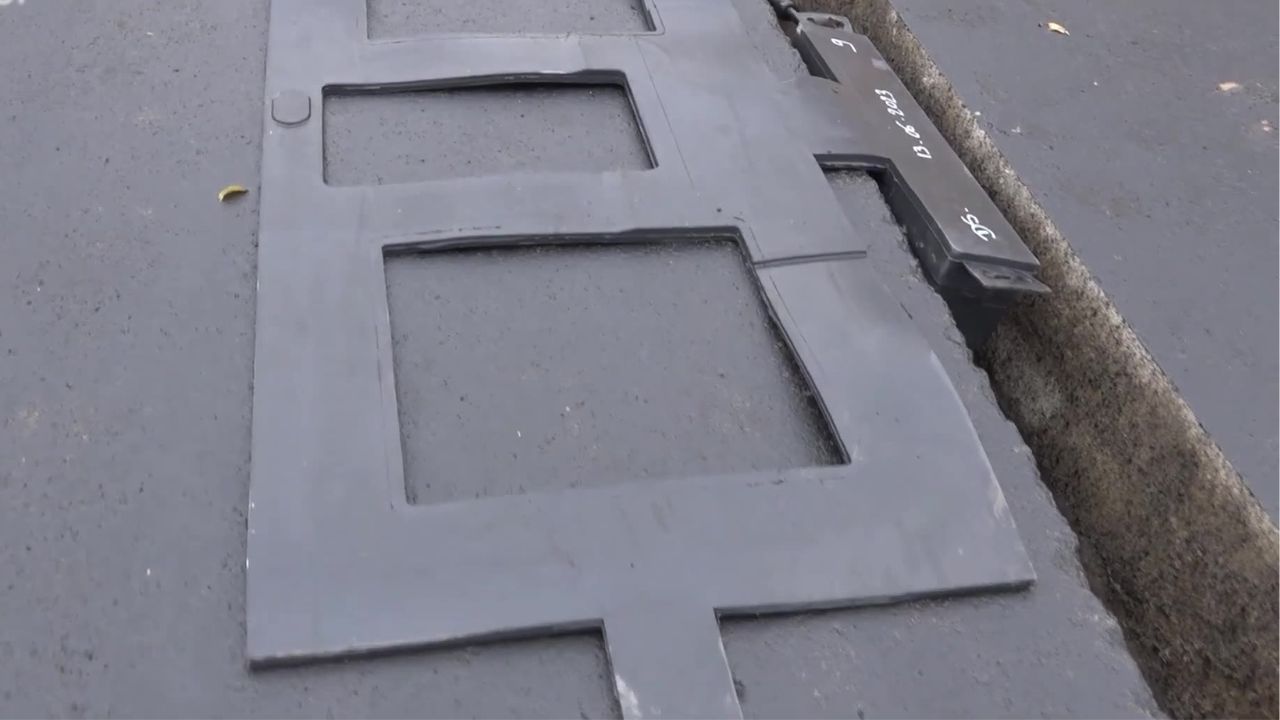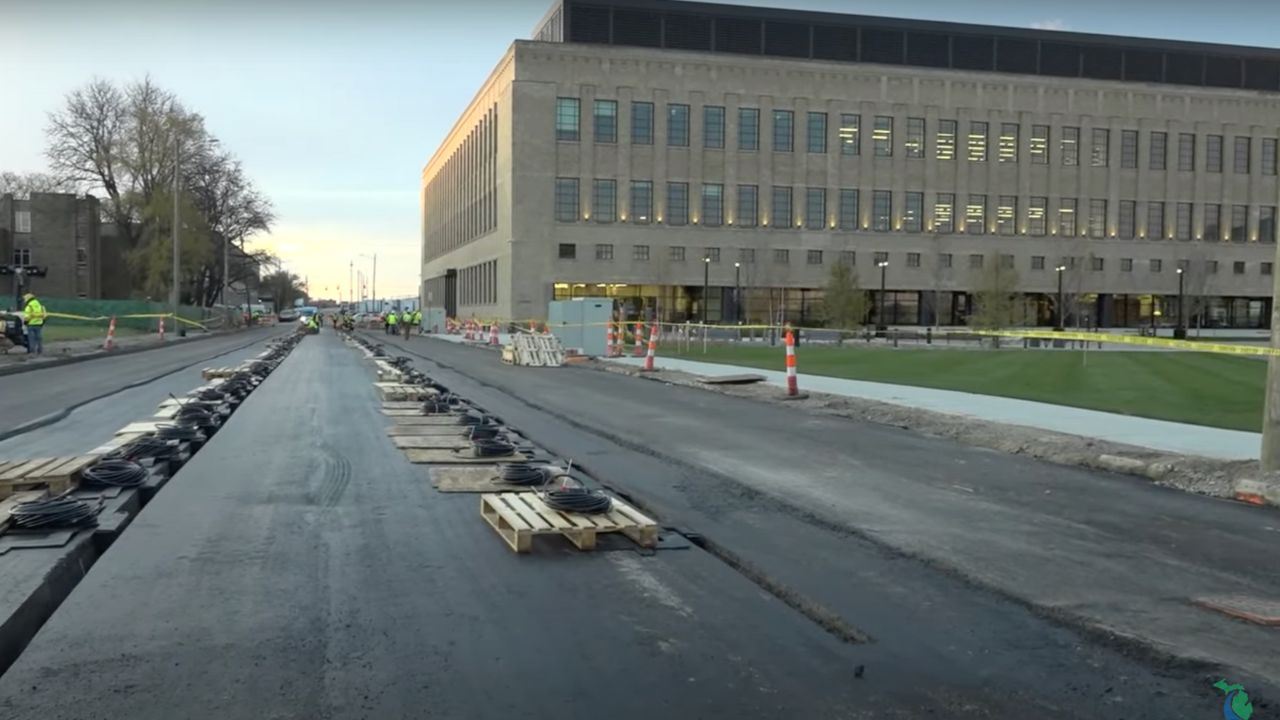Electric vehicles (EVs) are becoming more popular and affordable, but they still face some challenges, such as limited range, battery size, and charging infrastructure. However, what if there was a way to charge your EV while driving, without the need for plugging in or stopping at a station? That is the idea behind wireless charging.
What is wireless charging?
Wireless charging is a technology that allows electric vehicles (EVs) to receive power from coils embedded under the road surface, without the need for plugging in or stopping at charging stations. This could make EVs more convenient, efficient, and affordable for drivers, as well as reduce the environmental impact of transportation.

Credit: MDOT

Credit: MDOT
Wireless charging has been tested by several automakers and researchers around the world, but until now, no US city had implemented it in a public roadway. That changed when Detroit, the birthplace of the auto industry, announced the installation of wireless charging coils along a quarter-mile stretch of 14th Street in the historic Corktown neighborhood.
MORE: SHOULD A FOURTH LIGHT BE ADDED TO TRAFFIC SIGNALS FOR AUTONOMOUS CARS?
How does it work?
The wireless charging system was developed by Electreon Wireless, an Israeli company that specializes in inductive charging technology. The system consists of copper coils that are buried under the asphalt and connected to a power source. When a vehicle equipped with a receiver passes over the coils, it creates a magnetic field that transfers electricity wirelessly to the vehicle’s battery.

Credit: MDOT
MORE: THE WORLD’S FIRST ELECTRIC CRAFT IS SET FOR LIFT-OFF
How Detroit is testing wireless charging
The project is a collaborative effort between the State of Michigan and MDOT, the City of Detroit, Michigan Central, Ford, Jacobs, Next Energy, DTE, and others. It is part of a five-year pilot program to test the feasibility and performance of wireless charging in real-world conditions and explore its potential applications for public transit, such as buses and shuttles.

Credit: MDOT
The first vehicle to use the wireless charging system was a Ford E-Transit electric commercial van provided by Ford Motor Co. and equipped with the Electreon receiver. Ford plans to use the vehicle to collect data and provide feedback to the project partners on the efficiency and operations of the vehicle and potential long-term public transportation opportunities.

Credit: MDOT
MORE: ELECTRIC CARGO BIKE AIMS TO REPLACE YOUR SUV
What are the benefits of wireless charging?
Wireless charging could offer several benefits for EV drivers and communities at large. Some of the advantages are:
Convenience: Wireless charging could eliminate the hassle of finding and plugging into charging stations, saving time and money for drivers. It could also enable continuous charging while driving, extending the range and battery life of EVs.
Cost: Wireless charging could reduce the need for large and expensive battery packs, lowering the manufacturing and maintenance costs of EVs. It could also reduce the demand for charging infrastructure, saving resources and space for cities and communities.
Adoption: Wireless charging could make EVs more attractive and accessible for consumers, especially those who live in apartments or areas with limited charging options. It could also increase the market share and competitiveness of EVs, creating more jobs and innovation in the auto industry.
Environment: Wireless charging could reduce the greenhouse gas emissions and air pollution caused by transportation, improving the health and quality of life of people and the planet.

Credit: MDOT
What are the challenges of wireless charging?
Wireless charging also faces some challenges and limitations that need to be addressed before it can become widely adopted. Some of the issues are:
Efficiency: Wireless charging is not as efficient as wired charging, meaning that some energy is lost during the transfer. This could increase the electricity consumption and cost of EVs, as well as the carbon footprint of the power generation. The efficiency of wireless charging depends on several factors, such as the distance between the coils and the receiver, the speed and alignment of the vehicle, and the weather and road conditions.
Compatibility: Wireless charging requires both the road and the vehicle to have compatible equipment, which could limit the availability and interoperability of the system. Not all EVs have receivers installed, and not all roads have coils embedded. This could create a chicken-and-egg problem, where the demand and supply of wireless charging are dependent on each other. To solve this, standards and regulations need to be developed and adopted by the industry and the government.
Safety: Wireless charging involves high-voltage electricity and magnetic fields, which could pose some risks for humans and animals. To prevent this, the system needs to be designed and tested to ensure that it meets the safety and health standards and guidelines.
Kurt’s key takeaways
Wireless charging is an emerging and promising technology that could revolutionize the way we drive and power our vehicles. It could offer many benefits for convenience, cost, adoption, and environment, but it also faces some challenges and limitations that need to be overcome. Detroit is the first US city to install wireless charging in a public roadway, but it is not the last. More cities and countries are expected to follow suit and join the electric road revolution.
What do you think about wireless charging and its potential impact on transportation and society? Would you use it if it was available in your area? Let us know in the comments section below.



2 comments
It seems like roads are expensive enough to lay (or re-lay) as it is now. This would seem to make the tearing up of roads either impossible or much more expensive to do (then have to relay new coils when the road surface is re-laid). Seems like NOT a good thing to me.
As a person with a pacemaker I would wonder what effect it might have on my body.